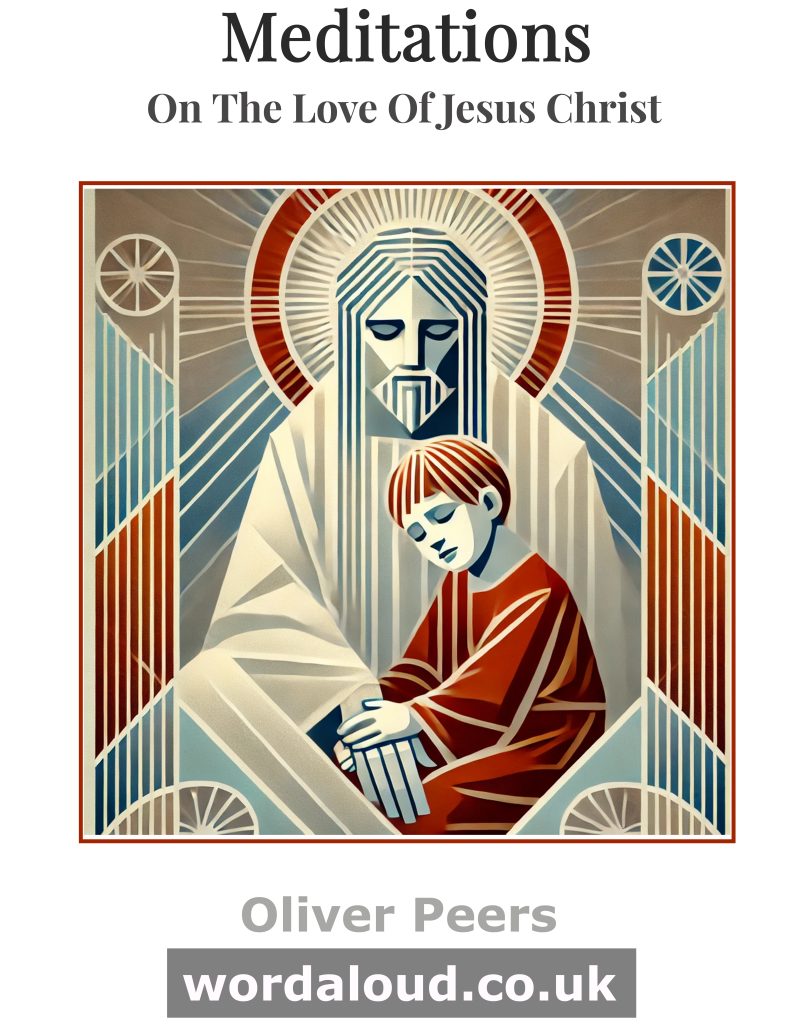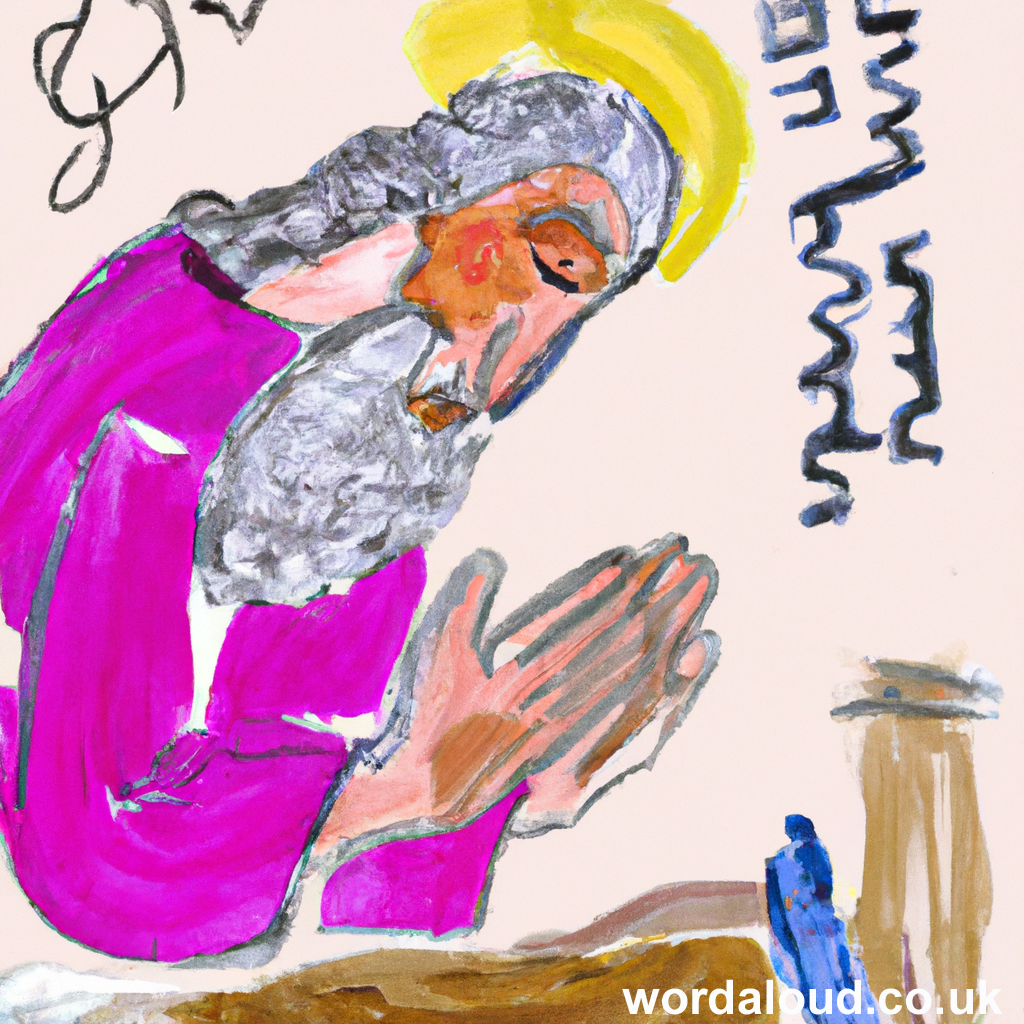Christian Art | Meditations On The Love Of Jesus Christ | Healing Miracles Of Jesus | The Blind Receive Their Sight
Matthew’s Gospel 9: 27-35 | Audio King James Bible | King James Version KJV
In the Gospel of John, we read, ‘God so loved the world, that he gave his only begotten Son, that whosoever believeth in him should not perish, but have everlasting life.’ (John 3:16, KJV) This verse speaks to the incredible depth of God’s love for us, a love that is beyond human understanding.
One of the ways Jesus revealed his love was through healing miracles. In the Gospel of Matthew, we read, ‘Jesus went about all the cities and villages, teaching in their synagogues, and preaching the gospel of the kingdom, and healing every sickness and every disease among the people.’ (Matthew 9:35, KJV) This verse shows us that Jesus was not only concerned with our spiritual well-being, but also our physical health.
One of the healing miracles performed by Jesus was the restoration of sight to the blind. In the Gospel of John, we read about a man who was born blind, and whom Jesus healed: ‘When he had thus spoken, he spat on the ground, and made clay of the spittle, and he anointed the eyes of the blind man with the clay, and said unto him, Go, wash in the pool of Siloam, (which is by interpretation, Sent.) He went his way therefore, and washed, and came seeing.’ (John 9:6-7, KJV)
This miracle demonstrates Jesus’ power over sickness and disease. The miracle shows us that Jesus was willing to heal anyone, regardless of their social status or background. The miracle reveals the compassion of Jesus for those who are suffering.
As we reflect on the healing miracles of Jesus, it is important to remember that they are not simply displays of power, but are signs of the kingdom of God. In the Gospel of Luke, Jesus says, ‘The Spirit of the Lord is upon me, because he hath anointed me to preach the gospel to the poor; he hath sent me to heal the brokenhearted, to preach deliverance to the captives, and recovering of sight to the blind, to set at liberty them that are bruised.’ (Luke 4:18, KJV) These words reveal Jesus’ mission and purpose on earth, to bring healing and wholeness to a broken world.
The healing miracles of Jesus point us to the larger story of redemption and restoration that runs throughout the Bible. In the Old Testament, we read about the prophet Isaiah, who foretold the coming of a saviour who would heal the sick and restore sight to the blind. Isaiah writes, ‘Then the eyes of the blind shall be opened, and the ears of the deaf shall be unstopped. Then shall the lame man leap as an hart, and the tongue of the dumb sing.’ (Isaiah 35:5-6, KJV) This passage reminds us that the healing work of Jesus was not a random occurrence, but was part of God’s plan of salvation from the beginning of time.
Throughout the history of Christianity, theologians and religious leaders have reflected on the healing miracles of Jesus and their significance.
Love Revealed By Jesus Christ | Saint Augustine
Saint Augustine, one of the most influential Christian theologians of all time, wrote extensively on the subject of the healing miracles of Jesus, and he believed that they were not only signs of his divinity, but also reminders of God’s ultimate power over sin and death. In his book The City Of God, Augustine argues that the miracles of Jesus are a sign of his divine nature and power. He also emphasizes the importance of faith in receiving healing from Jesus, writing, ‘Faith is the foundation of all good things that we hope for, and the assurance of things we do not see.’ (City of God, Book 22, Chapter 8)
Augustine also sees the healing miracles of Jesus as a way of revealing the deeper spiritual realities of the world. In his book On The Trinity, he writes, ‘For when Christ healed the bodies of men, He was, as it were, opening to the eyes of men a way of perceiving how the grace of God could heal their souls.’ (On The Trinity, Book 4, Chapter 18)
For Augustine, the healing miracles of Jesus are not just physical healings, but are signs of the greater healing that Jesus brings to our souls. He writes, ‘For what is the healing of the body, unless the soul also is healed? And what is the healing of the soul, unless the soul is reconciled to God?’ (City Of God, Book 22, Chapter 8)
Augustine also emphasizes the importance of humility in receiving healing from Jesus. He writes, ‘Let us not be proud, let us not be disobedient, let us not be incredulous, lest we be deprived of the power of His healing.’ (City Of God, Book 22, Chapter 8)
Meditations On The Love Of Jesus Christ | C.S. Lewis
CS Lewis, one of the most famous Christian authors of the 20th century, wrote extensively on the subject of the healing miracles of Jesus. In his book Miracles, Lewis argues that the miracles of Jesus are not just natural events that can be explained away, but are supernatural interventions that point to the reality of God’s kingdom.
Lewis writes, ‘The miracles of the New Testament are a different sort from those recorded in old Jewish and other records. They are not simply supernatural events that occur within the natural world. They are events that occur at the intersection of two worlds, the natural and the supernatural, and they point to the reality of God’s kingdom breaking into our world.’ (Miracles, Chapter 10)
Lewis also emphasizes the importance of understanding the context in which the healing miracles of Jesus took place. He writes, ‘The miracles of Jesus were not just random acts of kindness or power. They were performed in a specific context, with a specific message and purpose.’ (Miracles, Chapter 11)
For Lewis, the healing miracles of Jesus are not just signs of his divine power, but are also signs of his compassion and love for humanity. He writes, ‘In the healing miracles of Jesus, we see not just his power, but also his love and compassion for those who are suffering. We see the heart of God revealed in the person of Jesus.’ (Miracles, Chapter 11)
Lewis also emphasizes the importance of faith in receiving healing from Jesus. He writes, ‘Faith is not just a belief in the existence of God or in the truth of certain doctrines. It is also a trust in the goodness of God and in the power of Jesus to heal us, both physically and spiritually.’ (Miracles, Chapter 11)
Meditations On The Love Of Jesus Christ | Catholic And Protestant Traditions
Both Catholic and Protestant leaders have also emphasized the importance of prayer and faith in receiving healing from Jesus. In the Catholic tradition, the sacrament of the Anointing of the Sick is a powerful way for believers to receive healing and comfort in times of illness or suffering. In the Protestant tradition, many churches practice healing prayer and lay hands on those who are sick, trusting in the power of Jesus to bring healing.
One of the most important things to remember when reflecting on the healing miracles of Jesus is that they are not just stories from the past, but are living realities in the present. As it is written in the book of Hebrews, ‘Jesus Christ is the same yesterday, and today, and forever.’ (Hebrews 13:8, KJV) This means that the same power that healed the blind man in John 9 is available to us today.
Of course, this does not mean that everyone who prays for healing will receive it in the way they expect. The Bible is clear that sometimes God chooses to heal us in ways that are unexpected or different from what we might have hoped for. But even in these situations, we can trust that Jesus is still with us, still working in our lives, and still offering us the gift of his love and grace.
Jesus’ miracles challenge us to trust in the power of Jesus to heal us, both physically and spiritually. As we meditate on these miracles, let us remember the words of Jesus himself: ‘Fear not: believe only’ (Luke 8:50, KJV).
Love Revealed By Jesus Christ | A Prayer To Jesus For Healing
Dear Jesus,
We come to you today with humble hearts, seeking your healing touch. We are grateful for your love and compassion, which we see revealed in the healing miracles recorded in the Gospels.
We ask that you would touch us with your healing power, both physically and spiritually. We pray for those who are suffering from illness, pain, or disability, that you would bring them relief and healing. We pray for those who are struggling with emotional or spiritual wounds, that you would bring them comfort and peace.
We ask that you would open our eyes to the deeper spiritual realities of the world, that we may see the grace and love that you offer us. We pray for the gift of faith, that we may trust in your goodness and in your power to heal us.
We also pray for the grace of humility, that we may approach you with open hearts and a willingness to receive whatever healing you have in store for us. May we never be too proud or too skeptical to accept the gift of your healing touch.
We offer this prayer to you in the name of your Son, Jesus Christ, who healed the blind and the sick and who offers us the gift of salvation. Amen.








